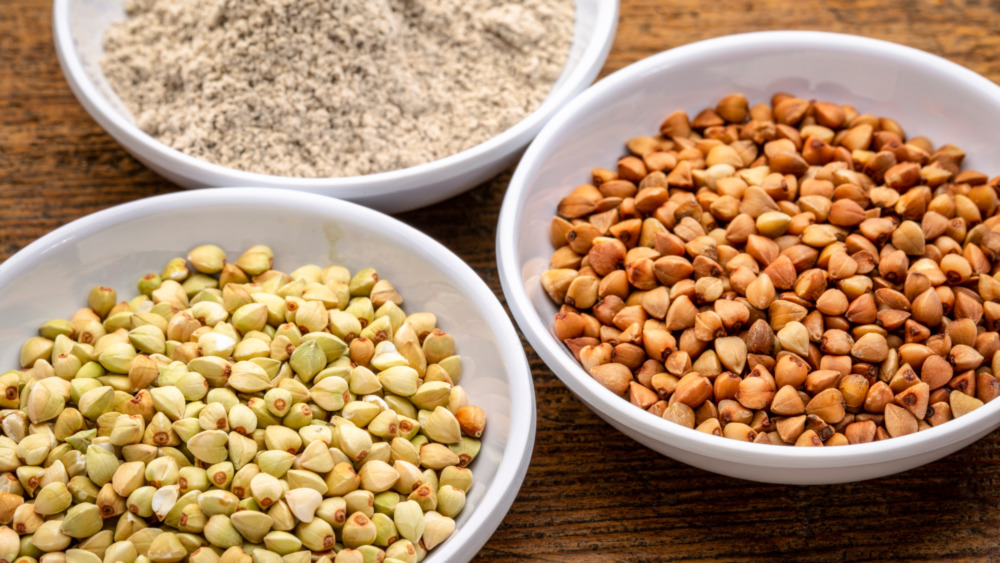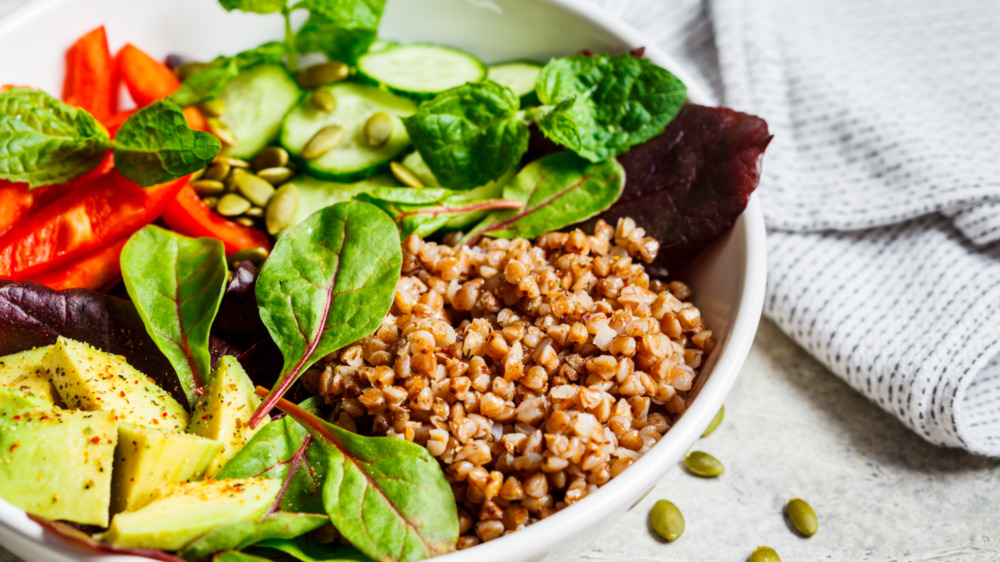Here's How Buckwheat Groats And Kasha Are Different
The bulk aisle in health food shops can be a bit overwhelming at times. Rows of assorted seeds, grains, nuts, and dried beans can leave you wondering what to choose, and more importantly how on earth to prepare it. Besides the variety, certain grains look almost identical but are named differently. Case in point: buckwheat groats and kasha. The two look very similar, save for kasha's reddish hue compared with the lighter brown, greenish color of buckwheat groats. Is kasha just another type of buckwheat and should it be cooked any differently? We've deciphered the distinction between the two so you can start adding them to your dishes without hesitation.
Let's start with the name, which is already misleading. People who eat a gluten-free diet will be pleased to know that buckwheat contains no wheat. Instead, both the buckwheat groats and kasha you find in stores are a seed, surprisingly in the same family as rhubarb, according to Bob's Red Mill. The word "kasha" comes from Eastern European languages and means porridge, explains Wise Geek, but in the United States the word has come to be synonymous with toasted buckwheat groats. That's right, kasha is just toasted raw buckwheat groats. When it's roasted, kasha develops a darker color and the flavor and aromas are amplified, resulting in a stronger and nuttier taste (via The Spruce Eats).
How should you eat them?
It's important to know which of the two you are preparing because, as The Spruce Eats points out, kasha cooks in about half the time as raw buckwheat groats. If you are just starting to experiment with buckwheat, the subtler flavor of the raw version could be a good place to begin. These two variations of buckwheat can be used for a number of recipes both salty and sweet. Depending on what dish you'd like to make, the cooking method will be different since buckwheat can be eaten as a porridge, risotto, or in salads with all the kernels kept intact. If you're more of a baker, try using buckwheat flour in your next creation for a nutty touch.
So why should you be adding buckwheat in all of its forms to your diet? Healthline explains that as a pseudocereal, buckwheat contains a high amount of antioxidants, minerals, and fiber. The Healthy reveals that buckwheat is a complete source of protein, too, meaning that unlike many plant foods, it contains all nine of the essential amino acids which makes it a fantastic option for plant-based diets. So decide if you want to start with a gentler flavor or something nutty and intense, then pick a sweet or savory recipe and get cooking!

